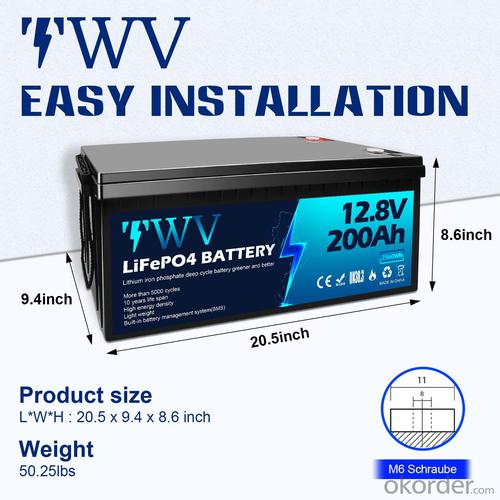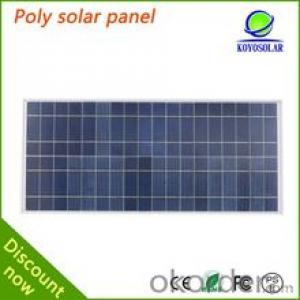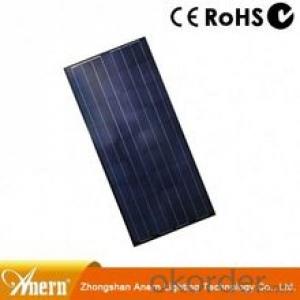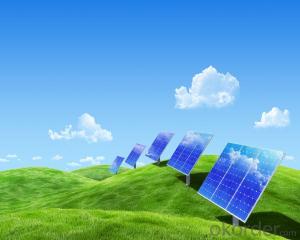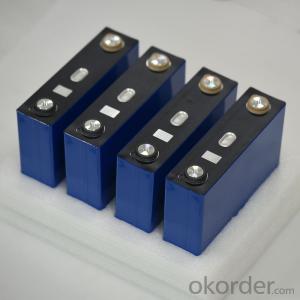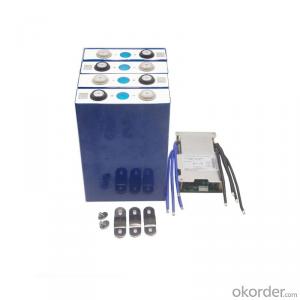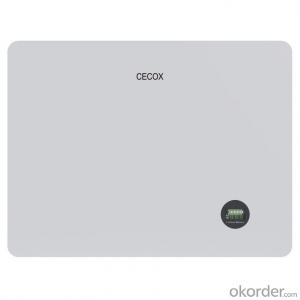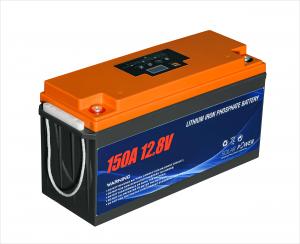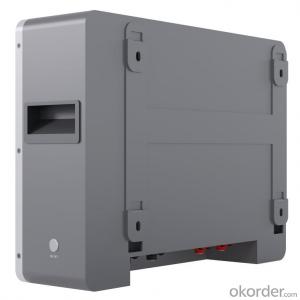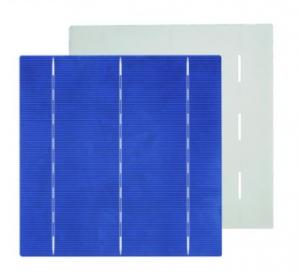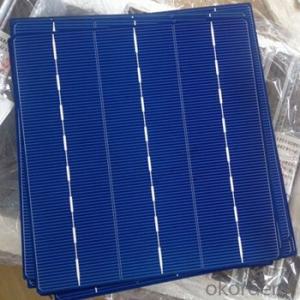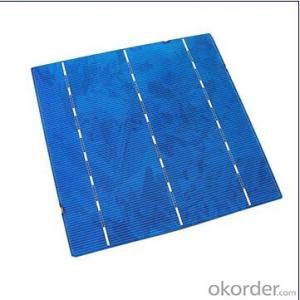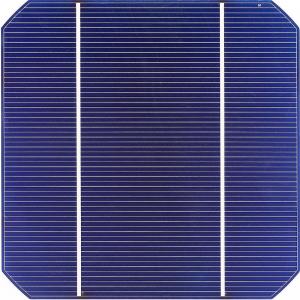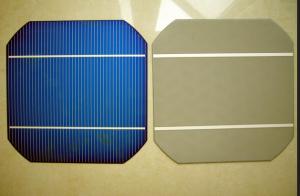12.8V 100Ah 200Ah 300Ah LifePO4 Lithium Iron Battery with Quantum Dot Solar Cells US and Europe Gel Replacement for Solar RV Marine
- Loading Port:
- SHENZHEN
- Payment Terms:
- TT OR LC
- Min Order Qty:
- 1 watt
- Supply Capability:
- 100000 watt/month
OKorder Service Pledge
Quality Product, Order Online Tracking, Timely Delivery
OKorder Financial Service
Credit Rating, Credit Services, Credit Purchasing
You Might Also Like
Specification
Max. Power(W):
15360W
Number of Cells(pieces):
4
Size:
523X240X215MM
| Product Code | LP-1205 | LP-1210 | LP-1215 | LP-1220 | LP-1225 | LP-1230 | LP-2410 | LP-2420 |
| Item | Specification | |||||||
| Nominal Voltage (customizable) | 12.8V | 12.8V | 12.8V | 12.8V | 12.8V | 12.8V | 25.6V | 25.6V |
| Rated Capacity (customizable) | 50Ah | 100Ah | 150Ah | 200Ah | 250Ah | 300Ah | 100Ah | 200Ah |
| Combination Mode | 4S1P | 4S1P | 4S | 4S2P | 4S2P | 4S2P | 8S1P | 8S1P |
| Ceiling Voltage | 14.6V ± 1V | 29.2V ± 1V | ||||||
| Minimum Voltage | 10V ± 1.0V | 20V ± 1.0V | ||||||
| Continuous Operating Current | ≤50A | ≤100A | ||||||
| Maximum Transient Current | ≤100A | ≤200A | ||||||
| Overcharge Protection Voltage | 3.65V ± 0.025V / Cell | |||||||
| Over Discharge Protection Voltage | 2.50V ± 0.025V / Cell | |||||||
| Charging Mode | Constant current and constant voltage (CC-CV) | |||||||
| Charging Current | ≤25A | ≤50A | ≤75A | ≤100A | ≤100A | ≤100A | ≤50A | ≤100A |
| Charging Temperature Range | 0~45℃ / 45~85%RH | |||||||
| Discharge Temperature Range | -20~55℃ / 45~85%RH | |||||||
| Shell (customizable) | Plastic shell | |||||||
| Plug (customizable) | M8 screw hole | |||||||
| Overall Dimension mm (customizable) | L194*W132*H172 | L325*W170*H215 | L330*W172*H220 | L523*W240*H215 | L523*W240*H215 | L523*W240*H215 | L523*W240*H215 | L521*W238*H218 |
| Weight | ≤6kg | ≤11kg | ≤14kg | ≤18kg | ≤18kg | ≤26kg | ≤18kg | ≤35kg |
| Signal Communication | - | Bluetooth | Bluetooth | Bluetooth | Bluetooth | Bluetooth | - | - |
| Scope Of Application | Caravan,UPS, Energy Storage,Marine,Golf Car,Buggies,Remote Monitoring,Switching applications and more | |||||||
| Certified | CE,UN38. 3. MSDS, shipping, hazardous package | |||||||
| Cell Certification | CE,UL,IEC 62109-1&-2, IEC 62477,EN61000,UN38.3 | |||||||
- Q: Can solar cells be used in high-altitude areas?
- Yes, solar cells can be used in high-altitude areas. In fact, solar cells can be even more effective in high-altitude regions due to the increased intensity of sunlight and reduced air pollution.
- Q: How about the current market price for the film solar?
- The a-Si ( Amorphous Silicon) thin film solar cells, with the advantage of short energy recovery period, simple manufacture process, inexpensive cost, good performance at high temperature and deposition on the flexible substrate, have been commercially produced and used in daily life.
- Q: Can solar cells be used for cooking?
- Yes, solar cells can be used for cooking. Solar cookers are designed to capture and convert sunlight into heat energy, which can then be used for cooking food. These cookers utilize solar cells to generate electricity, which can power electric stoves or ovens for cooking. Additionally, some solar cookers directly convert sunlight into heat using reflective surfaces and insulation, eliminating the need for electricity altogether.
- Q: What are the 3 things you need to know before you start to make solar cells?
- I think there is an easy way to follow even though the commercial solar cells use silicon as the semiconductor.
- Q: What is the maximum voltage output of a solar cell?
- The maximum voltage output of a solar cell depends on various factors such as the type of solar cell, sunlight intensity, temperature, and cell design. Typically, most solar cells have a maximum voltage output ranging from 0.5 to 1 volt.
- Q: Can solar cells be used in greenhouses?
- Yes, solar cells can be used in greenhouses. They can be installed on the roof of the greenhouse to generate electricity from sunlight, which can then be used to power various functions within the greenhouse such as lighting, heating, and ventilation. This helps reduce the reliance on traditional energy sources and makes the greenhouse more sustainable and environmentally friendly.
- Q: Are solar cells weather-resistant?
- Yes, solar cells are weather-resistant. They are designed to withstand various weather conditions, including rain, snow, and extreme temperatures, without significant damage to their functionality.
- Q: What are the safety considerations for installing solar cells?
- Some safety considerations for installing solar cells include ensuring proper grounding and bonding to prevent electrical shock hazards, following manufacturer's guidelines for installation to prevent fire hazards, and using personal protective equipment when working at heights or handling equipment to prevent falls or injuries. Additionally, it is important to be aware of potential electrical and fire hazards during installation and maintenance, and to have a plan in place for emergency response.
- Q: Can solar cells be installed on vehicles?
- Yes, solar cells can be installed on vehicles. In fact, solar panels are increasingly being used to power various components of vehicles, such as electric cars, hybrid cars, and even boats. These solar cells harness sunlight and convert it into electricity to charge the vehicle's batteries, reducing the reliance on traditional fuel sources and making them more environmentally friendly.
- Q: Can solar cells be used to power remote agricultural monitoring systems?
- Yes, solar cells can be used to power remote agricultural monitoring systems. Solar cells convert sunlight into electricity, providing a sustainable and renewable energy source for powering various electronic devices, including monitoring systems used in agriculture. This enables the monitoring systems to operate independently in remote areas without the need for a constant power supply or grid connection.
Send your message to us
12.8V 100Ah 200Ah 300Ah LifePO4 Lithium Iron Battery with Quantum Dot Solar Cells US and Europe Gel Replacement for Solar RV Marine
- Loading Port:
- SHENZHEN
- Payment Terms:
- TT OR LC
- Min Order Qty:
- 1 watt
- Supply Capability:
- 100000 watt/month
OKorder Service Pledge
Quality Product, Order Online Tracking, Timely Delivery
OKorder Financial Service
Credit Rating, Credit Services, Credit Purchasing
Similar products
Hot products
Hot Searches
Related keywords






